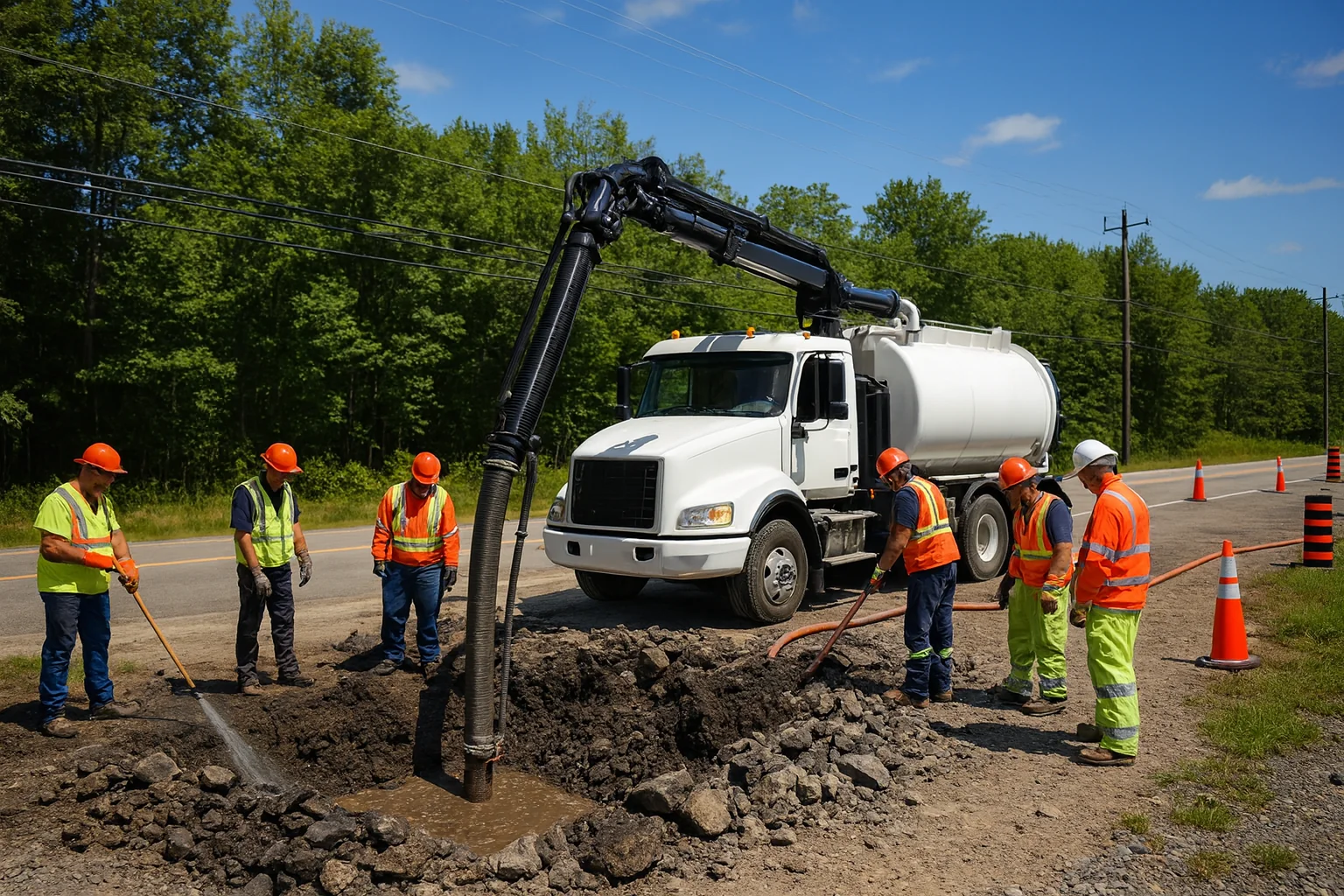Now Also operating from our new yard in Alice Springs. Our address is 3/31 Elder Street Ciccone 0870.
Beyond the Surface: How Hydro Excavation Powers Safer Civil Projects
September 15, 2025
Everyone working at JSM Civil always puts safety, precision, and efficiency at the heart of every project. Over the years, excavation methods have evolved significantly, and modern techniques have reshaped how projects are handled in both urban and remote environments. Among these innovations, hydro excavation has stood out as a safer and more reliable approach, offering better results without compromising underground utilities or environmental integrity. By combining advanced technology with refined processes, it allows teams to deliver outcomes that are cleaner, faster, and more cost-effective.
This method has become an essential tool for managing complex civil works where accuracy and minimal disruption are critical. It’s designed to adapt to a wide range of site conditions, including congested urban areas, environmentally sensitive locations, and unpredictable terrains. Whether preparing for infrastructure upgrades, exposing utilities, or supporting directional drilling projects, hydro excavation in Darwin delivers a level of control and safety that traditional methods often lack. The result is smoother workflows, reduced project delays, and outcomes that meet regulatory and environmental standards.

Hydro excavation offers a fundamentally different approach compared to conventional digging techniques, using high-pressure water and vacuum systems to remove soil safely. Unlike mechanical excavation, which can cause accidental damage to underground utilities or disturb nearby areas, this method prioritises precision and control. It allows teams to work confidently around sensitive infrastructure, reducing the risk of unexpected setbacks and costly repairs. For civil projects where safety, compliance, and efficiency are non-negotiable, it provides significant advantages that enhance overall project delivery.
One of the biggest risks during excavation is damaging existing underground assets. Hydro excavation solves this challenge by using controlled water pressure to remove soil without harming nearby infrastructure. Its precision allows projects to proceed safely, avoiding costly mistakes and environmental disruption.
Civil projects often vary greatly in location and conditions, requiring techniques that can adapt quickly. Hydro excavation offers flexibility, making it suitable for both highly populated areas and challenging remote locations. Its versatility ensures project teams can maintain productivity regardless of the environment.
Directional drilling projects require precise planning to minimise risks and ensure efficiency. Hydro excavation works hand in hand with drilling operations by safely exposing utilities, creating clear drill paths, and reducing potential hazards. When integrated properly, it helps teams avoid delays while improving overall project outcomes.
Preparing for directional drilling requires clear access to underground utilities and precise drill paths. Hydro excavation provides a safe and effective way to uncover these areas without damaging essential infrastructure. With a cleaner and more controlled process, teams can confidently plan and execute their drilling operations.
Keeping projects on schedule is essential to managing costs and meeting deadlines. Hydro excavation supports directional drilling workflows by eliminating delays caused by unforeseen underground obstacles. Its efficiency helps project teams achieve faster results without compromising safety or quality.
Environmental responsibility is becoming increasingly important in civil construction. Hydro excavation supports sustainable practices by limiting soil disturbance, preserving natural habitats, and ensuring compliance with strict industry standards. For areas where environmental sensitivities are high, it provides a practical solution that balances efficiency with protection.
Working in environmentally diverse regions requires excavation techniques that minimise ecological impact. Hydro excavation is designed to handle these challenges while maintaining safety and productivity on-site. It allows teams to operate effectively without compromising sensitive surroundings.
Maintaining compliance is critical for safe and successful project delivery. Hydro excavation aligns with safety requirements and industry regulations, giving teams better control over excavation risks. By using this method, projects can achieve a higher standard of safety while remaining environmentally responsible.
Hydro excavation has transformed how modern civil projects are executed by prioritising safety, precision, and sustainability. By adopting this innovative approach, teams can deliver efficient results while minimising risks to people, infrastructure, and the environment. Our team at JSM Civil continues to lead the way by integrating advanced excavation methods that improve project outcomes and stakeholder confidence.
As industry regulations tighten and environmental responsibilities grow, safer and more efficient techniques are essential for long-term success. Hydro excavation allows projects to meet strict compliance requirements without compromising quality or deadlines. By combining technical expertise with modern solutions, our company is committed to setting new benchmarks for safety and performance in civil construction.
